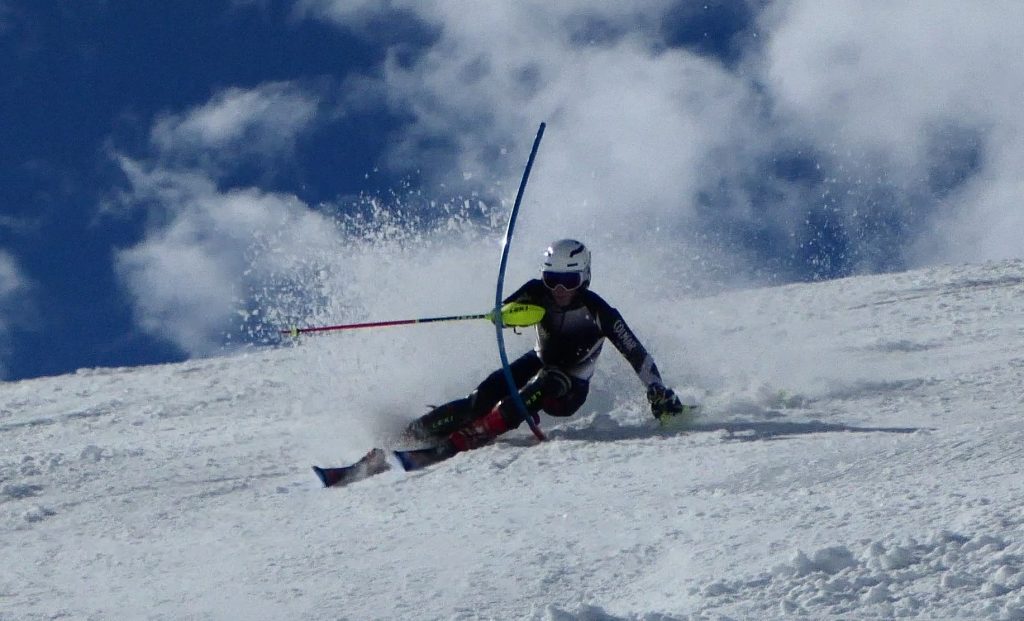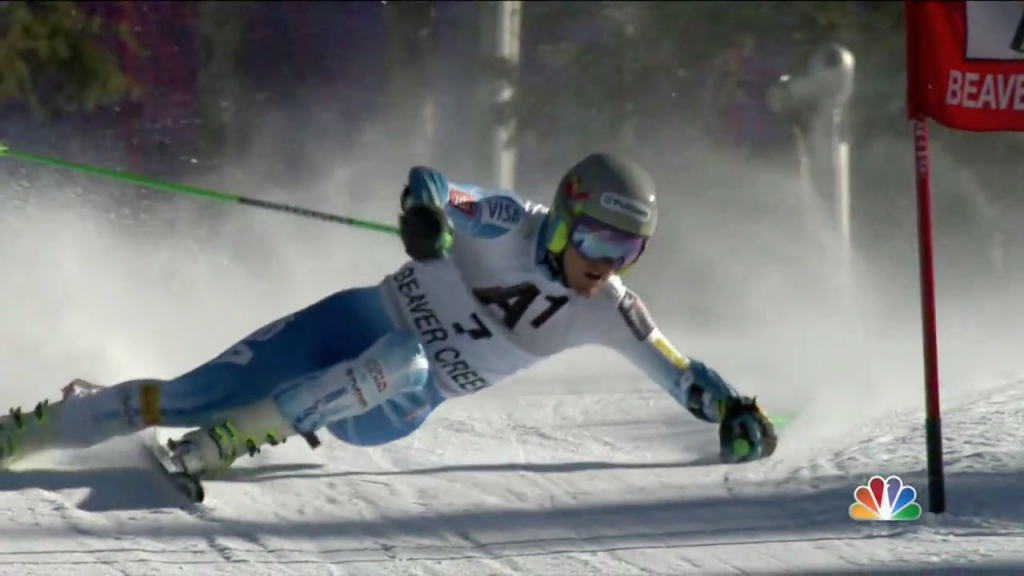My first question was “Tell me one thing that comes to mind that you have to do to make a turn!” Harriet replied: “Transfer the weight to the downhill ski”. Of course she meant the uphill ski but that’s not the important issue. Harriet had homed in directly to the source of ski teaching’s biggest problem – the fact that they teach movements related to statics (the wrong branch of mechanics) and not dynamics. In the “Before” video all skiers can be seen with very upright bodies trying to remain in balance – and so end up very precarious even on a gentle gradient.
The object of the session was to educate so that next time someone asks the same question the answer isn’t an almost complete blank and there will be some basic foundation and principles to work and build with while on skis. At the end of my own professional (ski) training (6 years) after passing the final exams I sat down with a coffee alone and asked myself the same question but more directly referring to “What did I actually understand?” and the answer was also a complete blank. When something doesn’t make sense it generally leads nowhere. That’s why we have to start from scratch with fundamentals from Newtonian mechanics. In skiing there is no “balancing” – there are organised accelerations (through ski design). The skier has one job – to fall over (laterally to the forward direction of the ski) and the ski has one job – to lift the skier back up (by cutting underneath the falling trajectory) Skiing is 100% the relationship between the centre of mass and the skis.
The “After” video shows a clear effort from everyone to accelerate the centre of mass into and through the turns. This doesn’t immediately eliminate all existing problems but it’s a proper beginning. There’s no point criticising all the current compensatory quirks that are going on – focus should be entirely on constructing the skiing from here on by focusing on the strengths that are to be found as dynamics develops. The aim is to progressively trigger more and more reflex driven and natural movements.
Why did Harriet fall? She fell because she’s used to “balancing” on two feet and when the lower ski started to skid a little on ice she tried to stand on the uphill ski – which simply doesn’t work. Developing more and more independent leg action – skating related movements and disequilibrium that puts you on one ski at a time – simply eliminates this type of problem naturally.
We worked on dynamics (the physics of disequilibrium) directly using the push from the uphill foot (accelerator pedal) to move the centre of mass downhill into the turn and constantly inward throughout the turn development. Terrain wasn’t always ideal but it was still okay. Skating and looking at how the feet are rolled onto their inside edge were other aspects that we developed for support to the dynamics. In the racer photos ( Alex in slalom and Ted Ligety – world’s best giant slalom skier) the straight leg is “full gas” on the accelerator pedal.
All three skiers need to learn what Alex is doing at the level of his hips (hip-angulation) – the hip – the largest joint in the body – is where bending takes place. It serves to maintain pressure on the ski fronts (where the driving/braking/steering power is mainly) and to prevent body rotation – which all three skiers were troubled with but were completely unaware of. Dynamics essentials can be more easily developed without going into this subject immediately – however most of the falls and instability in each skier – including the “rushed ” turns of Jane – are generated by rotational issues due to lack of hip-angulation.


We ventured briefly into “Pivot” territory so that everyone would eventually realise the ski actually turns more easily from its outside uphill edge – and initiating the dynamics “push” from this uphill edged ski makes most turn entry manoeuvres far easier, tighter and more controlled than by trying to always be on the inside edge of a ski for the entire turn.
Dynamics: http://madeinmountains.com/dynamics/
Pivot: http://madeinmountains.com/pivo/
Skating: http://madeinmountains.com/beginners/
Hip Angulation: http://madeinmountains.com/chiskiing/
Today’s view of Mont Blanc


